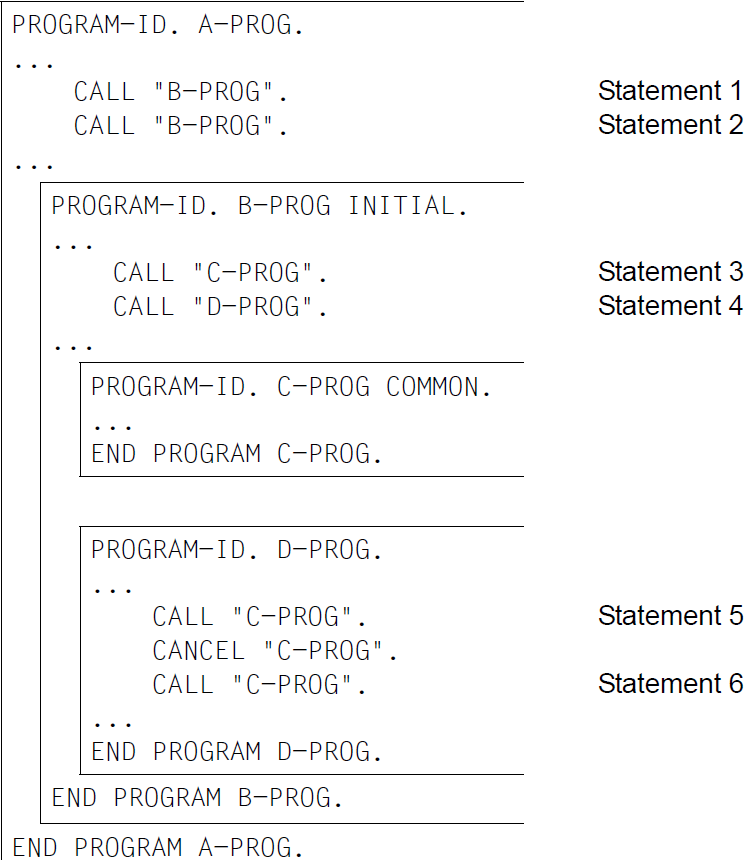The INITIAL attribute is created by specifying the INITIAL clause in the PROGRAM-ID paragraph of the program
Initial state means:
The program’s internal data defined in the WORKING-STORAGE SECTION or LOCAL-STORAGE SECTION is initialized. If the VALUE clause is specified for a data item, the item is set to the defined value. If no VALUE clause is specified, the initial value of the data item is undefined.
Files (contained files) belonging to the program are closed.
The control mechanisms for all the PERFORM statements contained in the program are set to their initial state.
A GO TO statement which refers to an ALTER statement in the same program is set to its initial state.
A program is in the initial state:
when it is called for the first time in a run unit,
when it is called for the first time since either it or a program in which it is directly or indirectly contained was the object of a CANCEL statement,
whenever it is called if it has the INITIAL attribute,
when it is contained directly or indirectly in a program that has the INITIAL attribute and when it called for the first time after this program has been called.
Example 12-4
Statement 1: Program B-PROG is in the initial state (rules 1 and 3).
Statement 2: Program B-PROG is in the initial state (rule 3).
Statement 3: Program C-PROG is in the initial state (rules 1 and 4).
Statement 4: Program D-PROG is in the initial state (rules 1 and 4)
Statement 5: Program C-PROG is not in the initial state.
Statement 6: Program C-PROG is in the initial state (rule 2).

